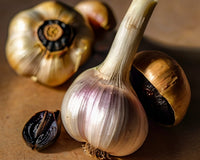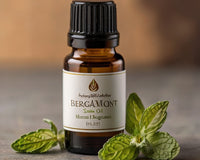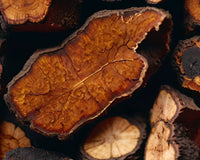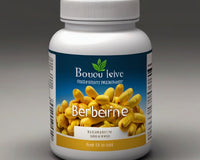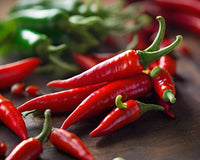Iron is an essential element needed to produce new red blood cells and is also found in our muscle cells and proteins used in metabolism and the immune system. An iron-rich diet ensures healthy energy levels and plays a key role in energy production and muscle function. The recommended daily allowance for iron is 8 mg for adult men and 8-18 mg for adult women. Recommended limits for vegetarians are slightly higher. Many people do not meet their dietary iron goals, but this goal can be easily achieved by eating iron-rich foods.
Tip: Try not to combine iron with coffee or dairy products as they can inhibit iron absorption.
lentils
Cooked lentils contain nearly 7 milligrams of iron per cup. Additionally, a cup of cooked lentils is rich in fiber and may even lower cholesterol levels and balance blood sugar. Make sure to soak the lentils overnight as this reduces phytic acid, which inhibits iron absorption.
Spinach
Too little iron means fewer red blood cells, which can lead to iron deficiency anemia. Spinach is a green leafy vegetable that is rich in iron - 100 grams of spinach contains 3 mg of iron. Most vegetables contain iron inhibitors, but pairing them with vitamin C can help you absorb iron better.
Soy beans
Soybeans can increase the iron content in the body and are also an important source of minerals such as copper and manganese. One cup of cooked soybeans contains nearly 9 mg of iron. These nutrient-dense legumes are an excellent alternative to meat on a vegetarian diet. In addition to this, soybeans are rich in protein, amino acids and many important vitamins. Add soybeans to pasta to enhance the flavor, or enjoy them on their own with a pinch of salt.
Oyster
Oysters are rich in protein, zinc and vitamin B12. They also contain a lot of iron. Three ounces of oysters provide nearly 8 milligrams of iron when cooked. Although raw oysters are loaded with iron, for safety reasons it is best to choose cooked oysters.
Fortified hot cereal
Fortified cereals can provide five to eight milligrams of iron. To get the most health benefits, check the nutrition label of a specific brand before purchasing. Buy cereals that are rich in iron and rich in other minerals, such as calcium and fiber. Adding vitamin C to your breakfast will help you absorb the iron in your cereal.
Dark Chocolate
Now, chocolate lovers have a good reason to eat dark chocolate: It's rich in iron. Three ounces of dark chocolate provides about eight milligrams of iron. Consuming a small piece of dark chocolate, along with other iron-rich foods, can help with iron deficiency anemia.
Beef liver
Offal products are the best sources of some important nutrients, such as iron. A 2.5-ounce serving of beef liver contains about 5 milligrams of iron. However, liver should be consumed in moderation, as too much can cause cholesterol to rise above ideal levels.
Sesame seeds
Sesame seeds are not only a great source of copper and manganese, they are also a good source of plant-based iron. Considered one of the oldest condiments, sesame seeds add a crunchy, nutty flavor to many Asian dishes. A quarter cup of sesame seeds contains more than five milligrams of iron. Toasted sesame seeds are combined with garlic and vinegar for an ideal accompaniment to savory dishes, noodles and salads.
Canned clams
A three-ounce can of clams provides about 24 milligrams of iron. Clams are one of the richest sources of iron besides red meat. Clams with spaghetti sauce are delicious.
Chickpeas
Chickpeas belong to the legume family. This iron-rich legume is rich in fiber and zinc and provides 4% of your daily iron needs. A single cup of chickpeas contains five milligrams of iron and a hearty dose of protein, making them a great choice for vegetarians. Likewise, be sure to soak the chickpeas overnight to reduce phytic acid, which is known to inhibit iron absorption.
Duck
A 100g pack of skin-on cooked duck meat contains 2.7 mg of iron, twice as much as chicken and turkey. This waterfowl is also a great source of selenium, an essential micronutrient that helps the body fight free radical damage. Although the meat looks darker than chicken or turkey, duck and goose are poultry and are considered white meat.
Xingtao
A cup of dried apricots contains 2.7 mg of iron, which is more than eight times that of fresh fruit. Apricots are an important source of nutrients. They also provide 7 grams of dietary fiber, compared to only 2 grams in fresh foods.
Tofu
Tofu contains 5.4 milligrams of iron per 100 grams, making it a valuable vegetarian and vegan meal. We absorb iron much more easily from meat than from plants, so giving up the former requires being careful to get enough of the mineral. Iron-rich plant foods such as tofu can help relieve anemia. Tofu is also very important for the kidneys and is less tiring for the kidneys than meat.
Cashews and Almonds
One of the quickest ways to overcome iron deficiency is with nuts. On average, cashews and almonds provide nearly 3.8 mg and 6.7 mg of iron, respectively, along with several other supporting nutrients. Both are also sources of the potent antioxidants vitamins E and K, which help reduce oxidative stress; while magnesium is involved in hundreds of important body systems, including strengthening the immune system.
Quinoa
Quinoa contains nearly 3 milligrams of iron per cup, about 15 percent of your daily requirement. Quinoa's unique combination of rich nutrients means it provides about 8 grams of high-quality protein per serving and is high in fiber. In terms of trace elements, quinoa is a good source of iron, copper, thiamine and vitamin B6. It also has nearly 20% of the daily requirements for folate, a B-vitamin necessary for making white and red blood cells in the bone marrow.

